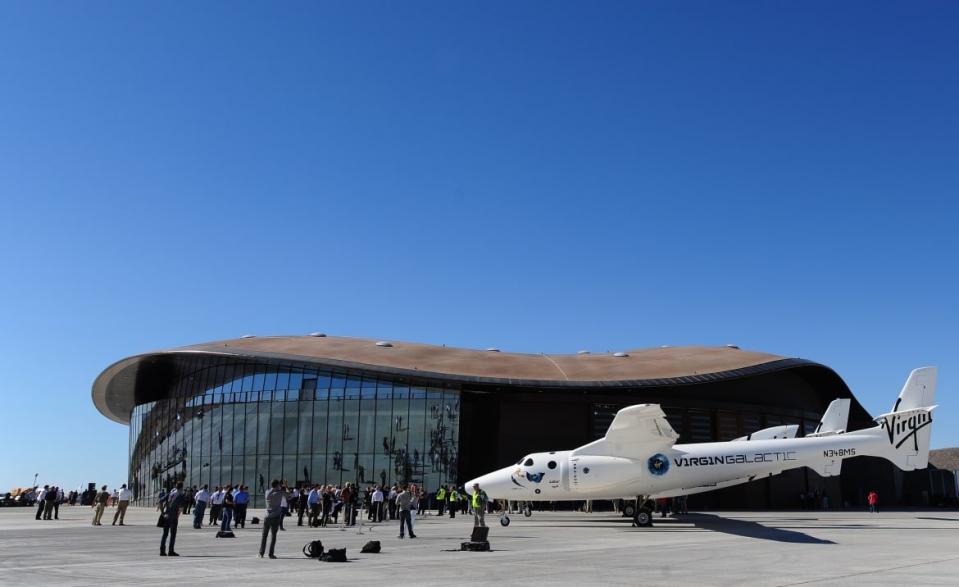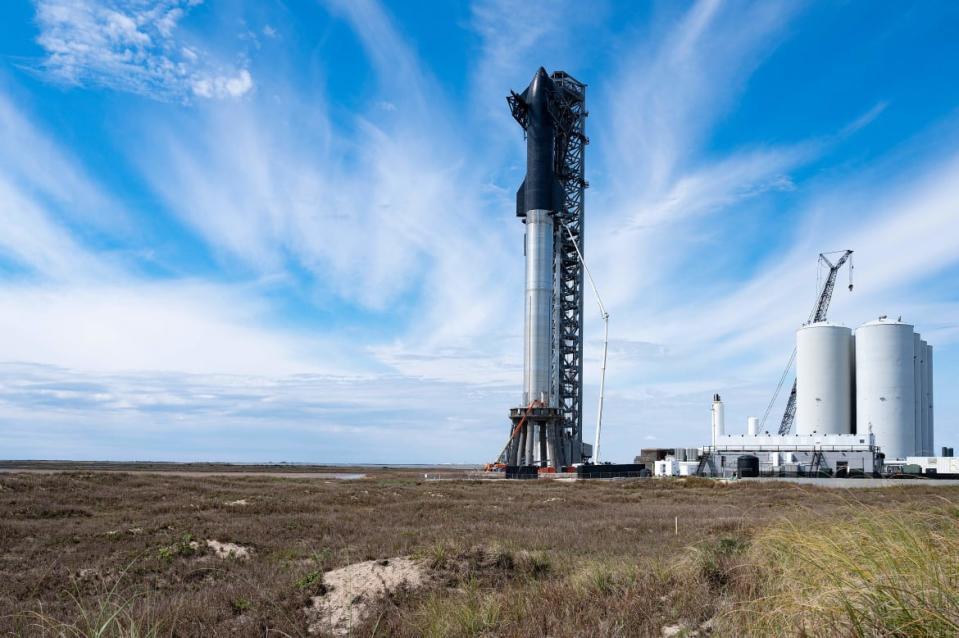The Booming Space Industry Is Fueling a Spaceport Boondoggle

Jim Goodman graduated from high school in Camden County, Georgia, in the thick of the space race, in 1965. Ten years ago, he came home to a place not so different from the one he left—largely rural, few career opportunities, sparse economic development. So, when the board of county commissioners formed a committee to build a commercial spaceport—a facility to launch satellite-bearing rockets into orbit, which they said would create jobs, draw tourists, and create a new world of opportunity for residents—Goodman thought their plan was “the greatest thing in the world.”
“When the spaceport first was announced, I was so much in favor of it—I would love to see an economic engine in Camden County,” Goodman, now a city councilman in the county’s only city, St. Marys, population 18,000, told The Daily Beast. “But what I came to slowly realize is, little by little, they were chipping away at the size of the rocket they said they could launch, misrepresenting things, and spending all this money on consultants. They had carte blanche.”
After more than nine years and 11 million taxpayer dollars invested in the proposal for Spaceport Camden, the county has nothing tangible to show for it: no ground broken, no solid business plan, and no tenant secured. Meanwhile, Goodman said, the county’s 911 responders are underpaid. The health department is run down. And despite being on the Georgia Coast, the county does not manage its own hurricane shelter and lacks an up-to-date emergency response plan. As a court-ordered public vote on the project’s future approaches, his neighbors too are beginning to see that while the stars hold untold potential for economic development on Earth, they also hold potential for bad deals, half-baked plans, and business proposals that can spin wildly off course.
Richard Branson Opens Spaceport
Private Industry Surging
While a spaceport might sound like a futuristic venture for a rural county of 54,000, the idea isn’t so “out there.” At the time of this writing, the Union of Concerned Citizens’ Satellite Database tallies more than 4,800 satellites in Earth’s orbit, up from approximately 3,000 last year, and that number is about to skyrocket. SpaceX hopes to multiply it nearly 15 times over in the coming few years with Starlink, its satellite internet service. Amazon, OneWeb, and other companies are seeking to flood space with their own mega-constellations of orbital satellites. And as technological advances continue to shrink the cost of satellite manufacturing, launches, and operations, an increasing number of companies around the globe are gaining the ability to send send their own devices into space.
To get satellites into orbit, cargo-bearing rocket ships must ferry them into place. This is the core business of the commercial space industry.
Last year, the world saw a record-breaking 144 orbital rocket launches, some for defense, some for government-run monitoring, and some for commercial satellite transportation ventures, in the U.S., China, Russia, India, and elsewhere. More than 90 percent of these 144 missions were successful, doubling the total number of launches into the outer atmosphere worldwide since 2010. As this “rocket renaissance” unfurls, analysts project the industry could triple to $1.4 trillion in value within the decade.
Considering this astronomical growth, it’s no wonder communities, in coastal Georgia and beyond, are angling to get in on the action. New spaceport proposals—from Michigan to Maine, Scotland to Sweden, Kenya to Indonesia—are in various stages of proposal or execution.

WhiteKnightTwo, carrying SpaceShipTwo, sits on display outside the hangar facility at Spaceport America on October 17, 2011 in New Mexico.
The U.S. is home to 15 federally licensed commercial and private spaceports, plus three government-operated facilities which are gradually branching out into commercial launches, too. Spaceport Camden is positioned to join this list: In December 2021, planners secured a hard-won site operation license from the Federal Aviation Administration—a key step toward making the dream a reality.
But for years, the project was bogged down by a complex FAA licensing process—and no small amount of controversy. Some residents are vehemently opposed to the fact that the proposed flight trajectory, unlike any other vertical launch spaceport in the U.S., crosses a barrier archipelago containing dozens of private homes, plus the Cumberland Island National Seashore (which contains about 8,000 acres of federally protected wilderness). These lands are all less than 10 miles from the toxic brownfield set to become the launch site. These obstacles narrow Spaceport Camden’s potential launch range to just a single azimuth (100º), compared to wide-open coastal launch locations like Cape Canaveral, Florida (with azimuths spanning from 35º to 120º) or Kodiak Island, Alaska (59° to 110°). This broader access to space means greater ability to deliver clients' satellite payloads to the right coordinates.
An FAA site license didn’t absolve Spaceport Camden’s planners of this controversy. Shortly after the December decision, two residents, including Jim Goodman, sued Camden County on the grounds that the county’s purchase of the proposed future spaceport site, currently owned by chemical corporation Union Carbide, would be unconstitutional without a public vote. In early February, a judge sided with the plaintiffs, and on March 8, the whole plan will be put to a public vote.
Failure to Launch
Ramon Lugo III, director of the Florida Space Institute at University of Central Florida, told The Daily Beast he doesn’t have high hopes for the Camden County project’s commercial viability. This is in part because of the site’s serious limitations, but it’s also a matter of the market at large.
“They keep talking about this boom,” Lugo said of the perceived spike in demand for commercial launch facilities. But, drawing on his experience as former head of NASA’s Launch Services Program, where he coordinated third-party commercial launches for the agency’s unmanned missions, he believes there is far more capacity at sprawling, established, well-positioned federally funded facilities—Kennedy Space Center, Vandenburg in California, Wallops Island in Virginia—before new, private spaceports are ever needed.
“The argument is going to be made that launch sites don’t get built overnight,” he said. “And I understand that, but I haven’t seen a business where somebody has got a bunch of customers booked and capacity appears to be a problem.”
It’s also worth noting that much of the world’s record-breaking recent launch activity has been the product of just two tenacious main players: the Chinese military, and SpaceX.
China, of course, has its own domestic launch facilities. But three-fifths of all U.S. launches in 2021—31 out of 51—were SpaceX Falcon 9 missions. The company conducts all of its commercial launches from three launch sites (Cape Canaveral Space Force Station and Kennedy Space Center in Florida, and Vandenberg Space Force Base in California). Soon, Musk hopes to add SpaceX’s Boca Chica testing site, Starbase, to the list. In the meantime, those three sites have been responsible for all Starlink launches to date, and will continue to be the primary launch sites for the tens of thousands of other satellites that will build out the Starlink network.
SpaceX has no reason to suddenly shift major operations to a new U.S. facility. And in launching their large-lift vehicles, they’re helping address demand more broadly, too. Often enough, third parties may be able to pay to glom onto these launches, sending their cargo up as secondary payloads instead of shelling out for their own rocket.
More capacity may be needed as the industry grows, said Lugo. But right now, it’s hard to know how much more, as spaceports across the country sit under-utilized—or altogether dormant.
Still Grounded
While the biggest, best-funded coastal spaceports continue to ramp up activity, more than half of the dozen U.S. commercial spaceports-for-hire have never hosted any launches at all. Many of these are inland in locations like Oklahoma, Colorado, and Texas. Instead of vertical launches, they are designed to send spacecraft into orbit with a horizontal runway launch that ramps up into the outer atmosphere like an airplane. (Richard Branson’s Virgin Galactic is the best known company to take this approach.)
In New Mexico, Virgin Galactic’s Spaceport America is outfitted for both vertical and horizontal launches. Constructed with $220 million in public funding, it consumes a $12.7-million state-appropriated operating budget annually and was recently blasted for improperly co-opting hundreds of thousands more in tax funds. The drain on resources has earned it the reputation of being a “sad bet.”

SpaceX's first orbital Starship SN20 is stacked atop its massive Super Heavy Booster 4 at the company's Starbase facility near Boca Chica Village in South Texas on February 10, 2022.
Then there’s Midland, Texas, where city officials are also waiting on their gamble to pay off. They obtained an FAA site license in 2014. Since then, taxpayers have watched upwards of $20 million disappear into the facility without seeing a single launch.
In 2019, Midland city councilman Spencer Robnett entreated his colleagues to see the project for what he thinks it is: a forward-thinking plan that just didn’t work. “The longer we perpetuate the myth of being a town of a spaceport, the longer we continue to waste taxpayer dollars on it,” he told the Midland city council. “No matter how much money you put into this, it will never be a functioning commercial spaceport worth the taxpayers' time and money.”
Ad Astra?
Come Camden County’s special election on March 8, Jim Goodman said he’ll be voting “Yes” on the referendum to repeal the county’s power to purchase the proposed spaceport site, which would bring the plans to a halt. That is, if the special election is allowed to proceed; on February 24, the commissioners petitioned the court to block the election. Just days before the early voting period commenced, they sued the plaintiffs and the judge, demanding the court scrap the vote, out of concern that it would "waste the taxpayers’ money."
“It’s just not a viable project,” he said, citing the residential area and Cumberland Island National Seashore in the flightpath, disruption to marine traffic, risk to the delicate estuary ecosystem, and the “untold and unknown” contaminants the country will be responsible for cleaning up. “If there was a pent-up demand and you absolutely needed to build a new spaceport, it doesn't change the fact that this is the worst possible location to put one.”
That doesn’t seem to be a deterrent for the planners, according to Ray Lugo: “Some of these projects started out with broad support, and a lot of financial investment,” he said. “And eventually they’ve realized, ‘Hey, this isn’t going to pan out.’ But Camden County is really sticking with their prevailing hope, that ‘If you build it, they will come.’”
This story was updated 2/28/22 to include additional context for the Camden County special election.
Get the Daily Beast's biggest scoops and scandals delivered right to your inbox. Sign up now.
Stay informed and gain unlimited access to the Daily Beast's unmatched reporting. Subscribe now.

